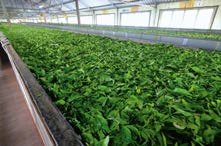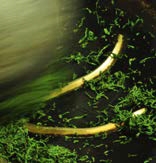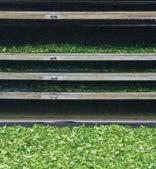WITHERING

The freshly plucked leaves are weighed and then undergo the withering process where the humidity
content of the leaves is reduced by about 50% in order to make them soft and flexible for the subsequent rolling. Nowadays the withering takes place in special withering troughs, which are stringed
with a wire grid and ventilated. In earlier times it was done outside on bamboo mats or sheets. The
withering process takes 12 – 18 hours depending on the current climate and air humidity. The withering
opens the membranes of the tea leaves so that they can be rolled more easily without breaking.
ROLLING

Subsequently, the withered green leaves are rolled in large rolling machines. These generally consist of two large, heavy metal plates, which are rotating against each other and are thereby breaking open the cells, bringing the cell fluid into contact with the oxygen in the air. This introduces the fermentation as well as the development of the essential oils, which then determine the scent and flavour of the teas. The rolled tea, now already starting to ferment, is brought into the fermentation room. Some tea factories subsequently use a so-called “rotorvane” machine, a type of shredder, which further processes the leaves. Here, the leaves are moved across a slowly rotating screw conveyor through a cylinder into which oxygen is introduced in order to accelerate the fermentation.
FERMENTATION

The quality of the finished tea is very much dependent on the correct fermentation. The fermentation is an oxidation of the cell fluids, which have been released during the rolling. For the fermentation, the leaves are spread out on tables in layers of 10 cm. In modern factories, spraying water from rotating ventilators humidifies the room in which the fermentation takes place. During the fermentation, which takes 2-3 hours depending on the desired taste intensity, the enzymes in the tea leaves develop complex taste profiles with malty, fruity or flowery notes. They also cause the leaves to change their colour, which gradually becomes a copper-red. This colour is found again in the wet tea leaves of the infusion. An experienced “tea maker” constantly monitors the degree of the oxidation, particularly with respect to the scent of the wet leaves.
